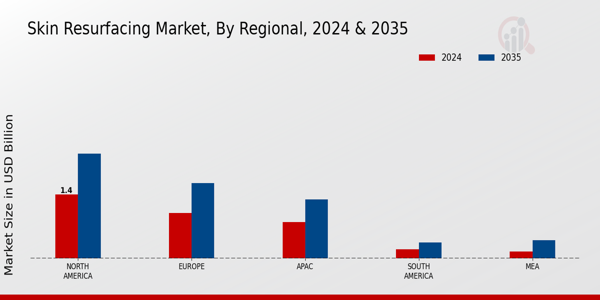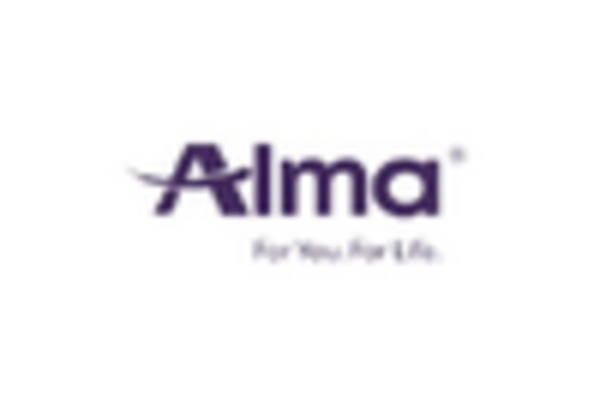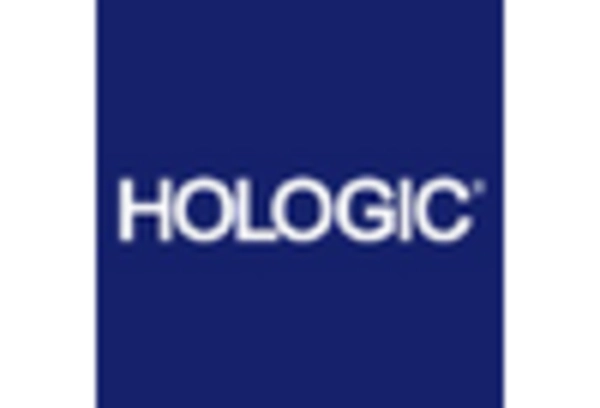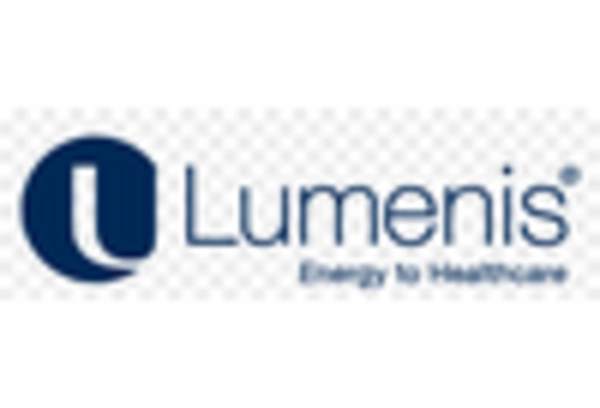Influence of Aging Population
The aging population is a significant driver of the Skin Resurfacing Market. As individuals age, they often seek solutions to combat the visible signs of aging, such as wrinkles and sagging skin. This demographic shift is prompting an increase in demand for skin resurfacing treatments that can rejuvenate the skin and restore a youthful appearance. Market data suggests that the number of individuals aged 65 and older is expected to double by 2050, indicating a growing market for anti-aging solutions. Consequently, the Skin Resurfacing Market is likely to expand its offerings to cater to this aging population, focusing on effective treatments that address their specific needs.
Rising Demand for Aesthetic Procedures
The Skin Resurfacing Market is experiencing a notable increase in demand for aesthetic procedures. This trend is largely driven by a growing awareness of skin health and appearance among consumers. According to recent data, the aesthetic procedures market is projected to reach a value of approximately 20 billion dollars by 2026. This surge is attributed to the rising disposable incomes and the increasing influence of social media, which promotes beauty standards and encourages individuals to seek skin resurfacing treatments. As more people prioritize their appearance, the Skin Resurfacing Market is likely to expand, offering a variety of innovative treatments to meet consumer needs.
Increasing Prevalence of Skin Disorders
The Skin Resurfacing Market is also influenced by the rising prevalence of skin disorders such as acne scars, hyperpigmentation, and aging skin. Data indicates that a significant portion of the population experiences these conditions, leading to a heightened interest in skin resurfacing treatments. As awareness of available solutions grows, more individuals are likely to seek professional help for their skin issues. This trend is expected to propel the Skin Resurfacing Market forward, as practitioners develop targeted treatments to address specific skin concerns, thereby expanding their service offerings.
Growing Acceptance of Non-Invasive Procedures
There is a marked shift towards non-invasive and minimally invasive procedures within the Skin Resurfacing Market. Patients are increasingly favoring treatments that require less downtime and offer quicker recovery. This trend is reflected in the rising popularity of procedures such as chemical peels and laser resurfacing, which provide effective results without the need for surgical intervention. As consumer preferences evolve, practitioners are adapting their services to include more non-invasive options, thereby enhancing the appeal of the Skin Resurfacing Market. This shift is likely to attract a broader demographic, including younger individuals seeking preventive treatments.
Technological Innovations in Skin Resurfacing
Technological advancements play a crucial role in shaping the Skin Resurfacing Market. Innovations such as laser technology, microdermabrasion, and chemical peels have revolutionized the way skin resurfacing is performed. These technologies not only enhance the effectiveness of treatments but also improve safety and recovery times for patients. For instance, the introduction of fractional laser technology has shown promising results in reducing downtime and minimizing side effects. As these technologies continue to evolve, they are expected to drive growth in the Skin Resurfacing Market, attracting both practitioners and patients seeking effective solutions for skin rejuvenation.


















Leave a Comment